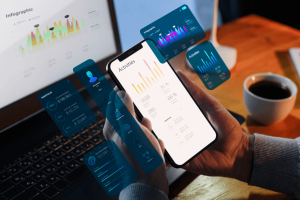Health Impact: Blood Disorders that Lead to Stroke

In the worldwide statistics conducted by the World Health Organization since 2002, there are about 15 million people who suffered from stroke every year. Out of the 15 million population, around 5 million dies while the other 5 million are becoming permanently disabled.
Based on the recent 2017 statistics, the stroke is still running towards the 2nd rank among the top 5 mortality and global health estimates of the World Health Organization. It is also proven that the high blood pressure contributed to the triggering effect of brain attack at its populates around 12.7 million people suffering from high blood. Going back to the present, how can people get ready to face the caveat of the Stroke disease? Before we answer that question, let’s discuss the following concepts behind this brain attack.
Overview of the Stroke
Stroke is also known as the brain attack. It occurs when the glucose and oxygen going to the nerve cells and brain were cut-off due to highblood pressure, aneurysm, fatty deposits, and cholesterol. The occurrence of this disease is associated with the blood vessels. As the blood vessels become ruptured, the antibodies releases biochemicals that may bring harmful effects to the nerve cells and brain thus, it may also affect the supply of the oxygen and glucose to the brain. Consequently, the supply will be restricted until a Stroke will trigger.
The brain attack can be acquired through hereditary and natural means. It can be passed down through the family lines or acquired due to several factors such as blood disorders, high cholesterol, fatty deposits, and more. There are two primary types of Stroke namely Hemorrhagic and Ischemic.
What is an Ischemic Stroke?
When the fatty deposits filled the arteries, it will be blocked and broke off then the biochemicals will start to spread all over the cells and brain through the bloodstream. The individual will start experiencing an irregular heartbeat and blood clots will be formed.
What is a Hemorrhagic Stroke?
It happens when the individual blood pressure becomes uncontrollable and high thus, it burst the blood vessels causing an internal bleeding around the brain area. Some people associate this with a brain aneurysm or weakening of the blood vessels.
Blood Disorders and Stroke Relationship
Heart blood disorders can increase the chances of getting brain attack because the accumulated fatty plaque can have filled up the arteries then block the passage of the oxygenated blood. If this will happen, the oxygen will have a limited supply to the brain and nerve cells causing the latter to deplete then eventually ruptured and die.
There are several triggering factors that cause the blood disorders then eventually lead to a stroke, here are the following:
- High Cholesterol
- High Blood Pressure
- High Triglycerides
- Enlarged Heart Chambers
- Atrial Fibrillation
- Irregular Heartbeat
- Heart Valve Defects
- Sickle Cells (Irregular shape of the blood cells)
For some reasons, there are people who were born with sickle cell diseases or having irregular shape blood cells. This hereditary disease may also result in a brain attack when the sickle cell gets stranded and stuck on the blood vessels. Thereafter, this phenomenon will create a blockage of the blood flow hence, it will limit the supply of the oxygenated blood transmitting to the brain and nerve cells.
The Impact of the Stroke
High blood pressure is the top reason why people were experiencing the stroke at the future time. It is the leading source that causes a formation of the blood clot and creates blockage against the passageway of the oxygenated blood. It may also damage the blood vessels causing them to rupture and die. This is where the Ischemic and Hemorrhagic brain attack occurs.
It is recommended that if you are already experiencing high blood pressure, you should keep track and manage the blood pressure. Ask consultations from the doctors and cardiologist in the hospital for your disease. They will give you the advice, prescriptive medications and treatments, and provide you with the list of the do’s and don’ts for having a high blood pressure.
If you’ve been prescribed a beta blocker like Lopressor, it’s important to discuss the potential side effects of this medication with your doctor should this be your course of treatment for hypertension.
We have gathered useful and relevant tips on how to manage your high blood pressure. Adapt this lifestyle changing tips to aim for a healthy and stroke-free living. Here are the following tips to consider:
- Try to Lose Weight and Maintain the Standard Weight
- Eat a Healthy Balanced Diet
- Exercise Regularly at least 150 minutes a Week
- Reduce the Sodium in the Diet Plan
- Quit Drinking Alcohol and Smoking
- Trim-Down the Coffee Intake
- Drink at least 8 glasses Water per Day
- Manage your Stress and Emotions
- Monitor your Blood Pressure
- Consider Drinking Detox Beverages
If you still feel some symptoms and signs, you should seek professional advice as immediately as possible. In this way, you will be given medical attention and support on what to do with the signs and symptoms that you’re currently experiencing. Always stay alert with your health conditions and do not panic.






